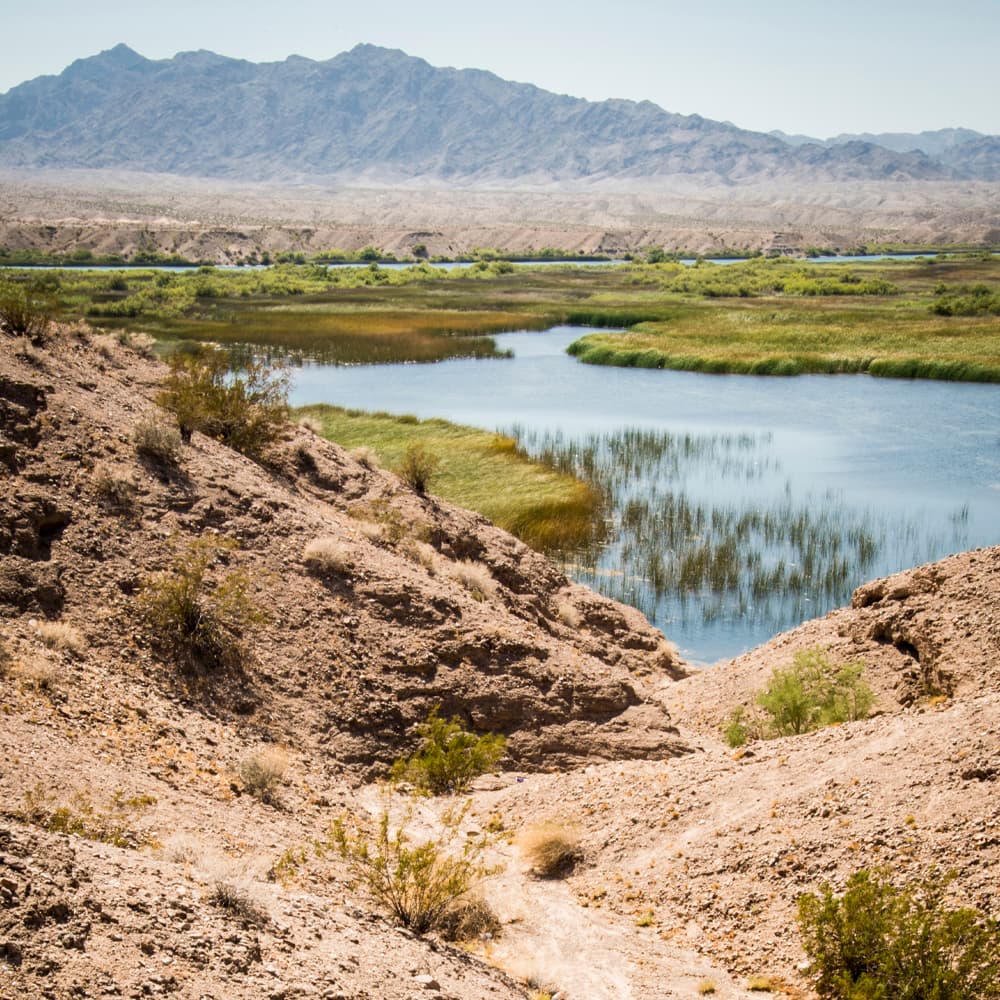AMWUA Blog
BY: Warren TenneyStudy Gauges Health of the Colorado River System

All across the West, we are all feeling the effects of the record-breaking heat and lack of precipitation. In addition to the obvious consequences, what do the high temperatures and lack of moisture really mean for water sources such as the already compromised Colorado River?
This record-breaking drought has already put stress on the Colorado River system for the last two decades. And although significant measures have been taken to address the over-allocation of the River and its structural deficit with the signing of the Drought Contingency Plan (DCP) , which ensures more water remains in Lake Mead, hot weather and low precipitation levels still play a part.
This past winter, a significant amount of snow fell in the Rockies. Still, due to a dry spring and warm temperatures, the run-off evaporated, depleting the benefits from the snowpack. So what does that mean for the Colorado River system that impacts more than just Arizona?
 Well, last Friday, the United States Bureau of Reclamation (BOR) released the August 24-Month Study that determines how the Colorado River system will be managed the following year based on the levels of Lake Mead. The Study's findings can impact the water supplies used by millions of people who rely on the Colorado River, including here in Central Arizona. What Colorado River watchers look for is whether the Study shows if Lake Mead's elevation will be above the critical 1075' elevation, which is the trigger point for a Tier One shortage.
Well, last Friday, the United States Bureau of Reclamation (BOR) released the August 24-Month Study that determines how the Colorado River system will be managed the following year based on the levels of Lake Mead. The Study's findings can impact the water supplies used by millions of people who rely on the Colorado River, including here in Central Arizona. What Colorado River watchers look for is whether the Study shows if Lake Mead's elevation will be above the critical 1075' elevation, which is the trigger point for a Tier One shortage.
The August edition of the Study shows Lake Mead's levels will be above that mark come January, which means the system will remain next year at Tier Zero, which is what happened in 2020. Still, due to a drier than expected year, the possibility of a Tier One shortage as early as 2022 increases, but again will be dependent on precipitation levels this coming winter and spring.
While Tier Zero does require a mandatory reduction of 192,000 acre-feet in Arizona's Colorado River water supply, the volume of that reduction is actually very similar to what Arizona water users have already been voluntarily conserving in Lake Mead since 2015. As a result of this water stewardship, Arizona is already prepared to manage the impacts of Tier Zero and will continue to prepare for the unknowns that may lay ahead.
So what does this all mean for us here in the Valley? Simply this:
- There will be no immediate impact to our municipal water supplies, so a shortage on the Colorado River does not mean shortage at your tap.
- Valley cities have been preparing for a shortage on the Colorado River for decades and will continue to do so, as long-term preparations mean a more secure water future.
- We all need to use water wisely to increase our resiliency for the long-term because conservation and efficiency are our way of life in the desert.
There is no doubt that these latest projections bring some short-term comfort as we will remain at Tier Zero. It also highlights the immediate benefits of DCP, but yet we must not lose sight of what lies well beyond this most recent outlook. With that in mind, strong water management, conservation, and efficiency will remain priorities for the AMWUA cities. Long-term planning remains at the forefront, and we, as residents, can also do our part to ensure we are ready for a drier future by using water wisely, building drought-resistant landscapes, and making conservation our way of life. We know that every drop counts, and it increases our collective resiliency for the long-term, especially here in the desert, where the only thing that remains predictable is our arid climate.
 The Arizona Department of Water Resources (ADWR) collaborates with the Bureau of Reclamation and representatives of the seven Colorado River Basin States to better prepare for Arizona's long-term needs and by taking an active role in water use projections, monitoring of hydrologic conditions and Colorado River operations. The Department also utilizes models prepared by Reclamation to evaluate various scenarios related to modifications in water use, hydrology, climate, water supply and demand, and other factors within the Colorado River Basin. Visit their Colorado River Interactive Dashboard for current conditions and updated levels of the River System.
The Arizona Department of Water Resources (ADWR) collaborates with the Bureau of Reclamation and representatives of the seven Colorado River Basin States to better prepare for Arizona's long-term needs and by taking an active role in water use projections, monitoring of hydrologic conditions and Colorado River operations. The Department also utilizes models prepared by Reclamation to evaluate various scenarios related to modifications in water use, hydrology, climate, water supply and demand, and other factors within the Colorado River Basin. Visit their Colorado River Interactive Dashboard for current conditions and updated levels of the River System.
For over 50 years, the Arizona Municipal Water Users Association has worked to protect our member cities' ability to provide assured, safe, and sustainable water supplies to their communities. For more water information, visit www.amwua.org .
Stay up to date & sign up for the AMWUA Blog:
Sign Up Now For Email Marketing you can trust.
